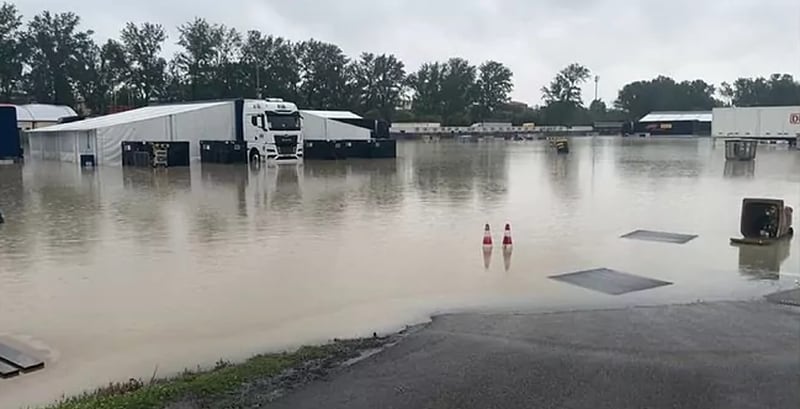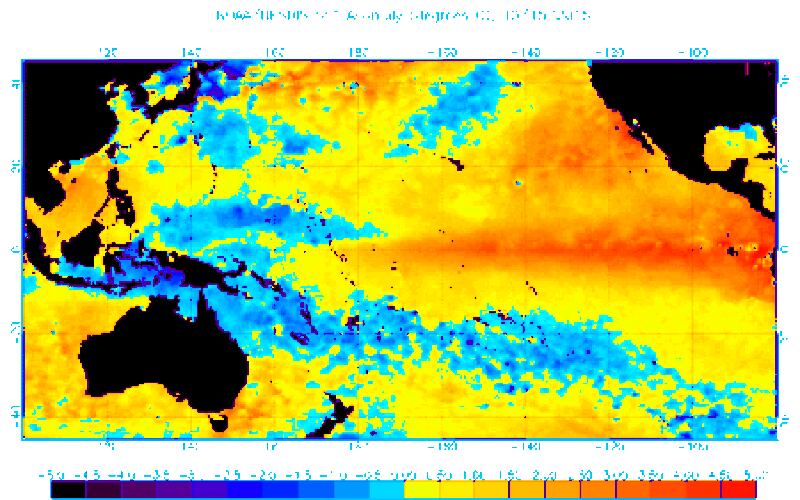Although in recent months it has affected the Italian peninsula and the United States, there is also historical evidence of its presence in Patagonia and in the extreme south of our country. “They are much more common in the Pacific,” says climatologist Raúl Cordero.
Over the past few days, Italy was surprised by an intense meteorological phenomenon called cyclone bomb , made up of storms whose core undergoes a very rapid drop in pressure. This rapid drop in pressure causes an intensification of the storm, which generally results in intense winds and precipitation.
In the Italian peninsula, the phenomenon has wreaked havoc, with overflows of rivers and streams, affecting entire towns, due to short and heavy rains, as well as very strong winds. It happens from one moment to another, and suddenly it stops.
Could a bomb cyclone with torrential rains happen in Chile?
What is this phenomenon? What are the climatic consequences? Could there be a bomb cyclone in Chile? How would this affect us? Was this an extreme situation?
According to Raúl Cordero, climatologist at the University of Santiago, “Bomb cyclones are much more common in the Pacific, where the ocean is rough and warm enough to favor the intensification of these storms ”.
However, he says that with much less frequency they can also be recorded at other latitudes. “When they occur on the east coast of the United States, particularly in years marked by the La Niña phenomenon, they affect highly populated areas. At the beginning of this year, there were such a storm in California and now that of Italy,” Cordero says.

“In the southern hemisphere, the Southern Ocean, which surrounds Antarctica is, in fact, one of the areas where more bomb cyclones are generated. Some of these storms have affected our Patagonia, so in reality the far south of Chile is no stranger to intense storms,” he adds.
For the peace of mind of many, Cordero points out that these storms typically occur over the ocean at latitudes above 40°. “Therefore, that an event of this type affects the central zone of Chile is very unlikely.”
He also adds that during the year 2023, and despite the presence of the El Niño phenomenon and climate change, it is unclear whether this is more likely to occur.
High temperatures and the influence of the El Niño phenomenon
This year has been marked by interesting and varied climatic records, almost all associated with high temperatures. For example, February and March were the hottest “February” and “March” in Santiago and the Central Zone since records existed, a situation to which April and May were added along with other milestones.
This last, despite frosty mornings and nights, even accompanied by a few days of rain, during the day it showed thermometers with average heat, a phenomenon that seems to never end, “extending the summer” for almost five months.
Lamb explains that There have already been seven heat waves so far this year according Chilean Meteorological Directorate (DMC) .

“This phenomenon is associated with specific weather conditions which favor the winds from the mountains to the valleys. down the hill, the air is usually compressed and heated. This hot east wind receives different names depending on the region, such as puelche or raco, and is responsible for the high temperatures,” explains Cordero.
And that’s not all, adds Cordero, since 2023 will also be it’s the hottest year in terms of maximum temperature in Santiago on the date of existence of the record (from January to May).
Cordero points out that the high temperatures recorded in Santiago are also influenced due to the El Niño phenomenon . “This warming of the tropical Pacific favors high temperatures in central Chile and in the north of the country”, explains the climatologist.
But El Niño, he adds, also has an effect on rainfall. “In the past, it was associated with rainy years in the central zone, and although this influence seems to have weakened over the past two decades, we still hope that 2023 will not be as dry as the previous four years” , he argues. .
Source: Latercera
I am David Jack and I have been working in the news industry for over 10 years. As an experienced journalist, I specialize in covering sports news with a focus on golf. My articles have been published by some of the most respected publications in the world including The New York Times and Sports Illustrated.


